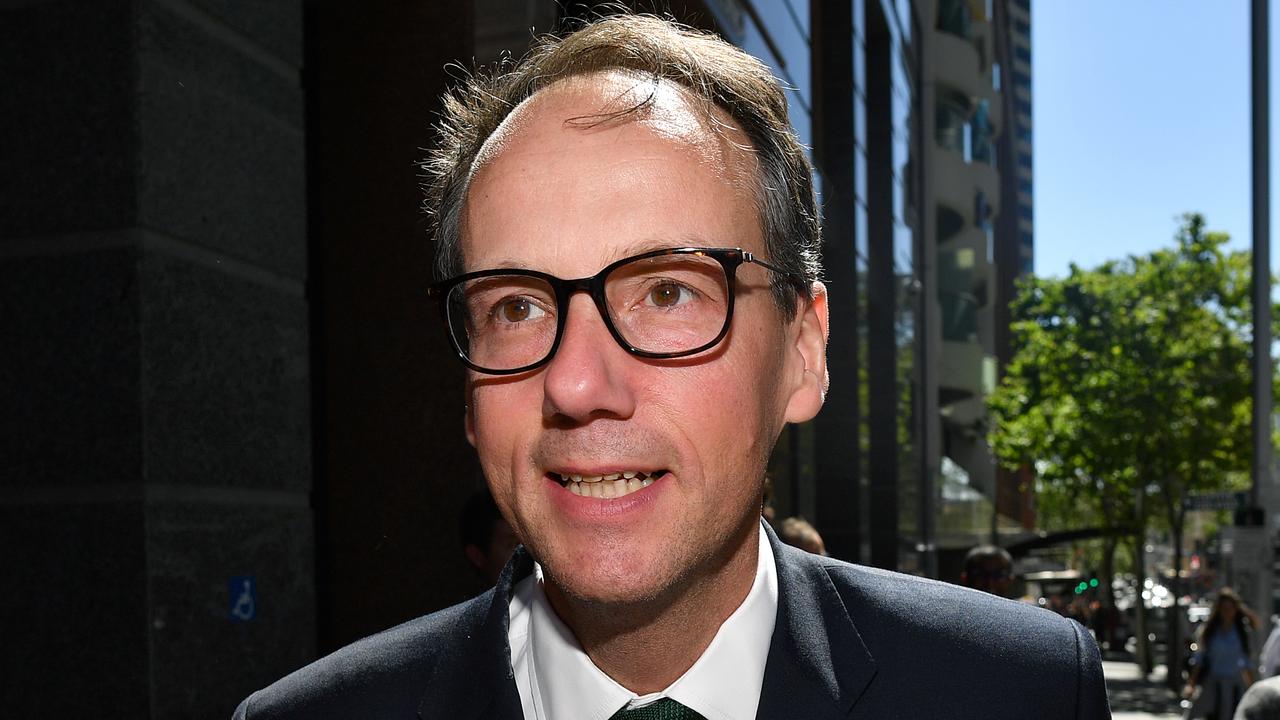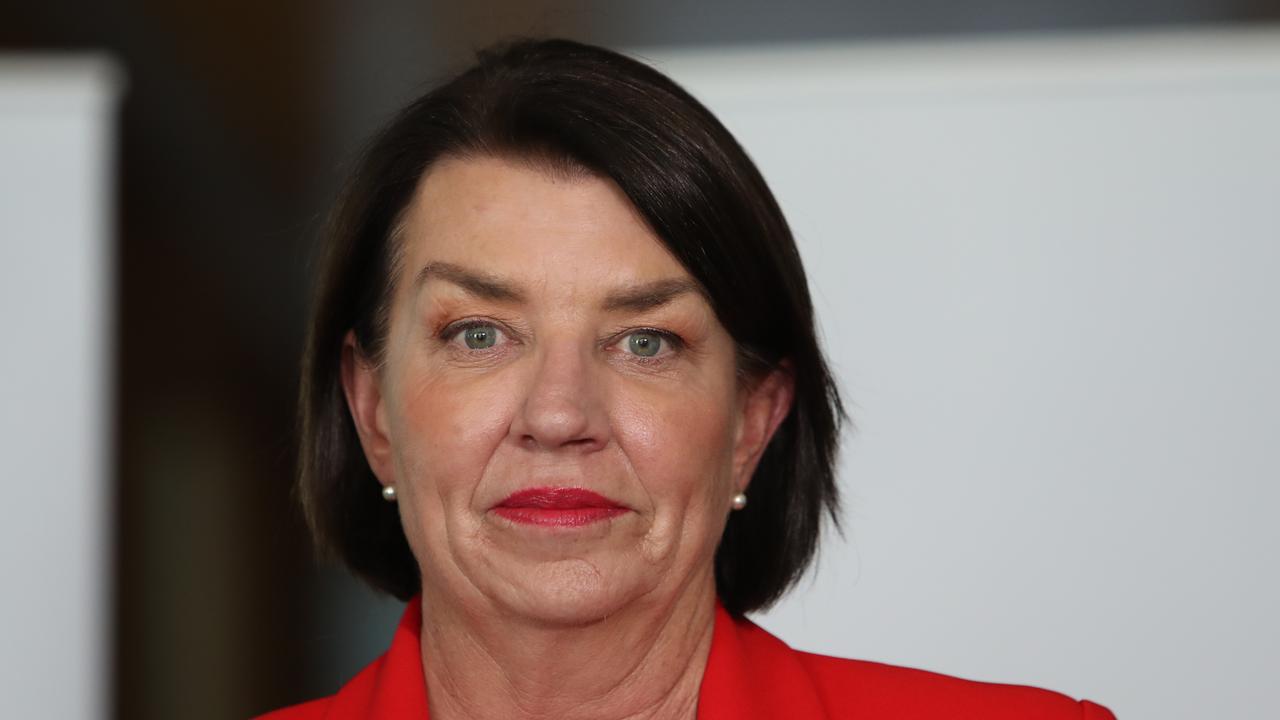Banking royal commission: NAB failed to pass on rise in scandal compensation
NAB failed to tell ASIC of boost to victims’ compensation for a fee scandal, amid concerns about media reaction, inquiry told.

NAB’s former head of wealth, Andrew Hagger, was part of a board meeting that approved tens of millions in extra compensation for victims of a fee scandal, but failed to pass the information on to the Australian Securities and Investments Commission’s Greg Tanzer in a phone conversation two hours later, the banking royal commission has heard.
At the time, in October 2016, Mr Tanzer was part of an ASIC team preparing to release a report outlining fees charged to customers where no service was provided.
In email discussions as NAB’s top brass mulled both the ASIC report and the impending release of the bank’s full year results, chief executive Andrew Thorburn said his main concern was its proposed media response when the regulator’s report came out, the commission heard.
Mr Hagger was today recalled to give a second round of evidence after the royal commission last week expressed unhappiness with the quality of answers by two other bank executives given over four gruelling days of testimony.
He denied suggestions by counsel assisting the commission, Michael Hodge, QC, that the bank withheld an update boosting the amount of compensation from $12.7m to $34m as part of a plan put forward by corporate affairs executive Nathan Goonan to say nothing so that the bank would remain “in the middle of the pack” when the report was released.
Mr Hagger recorded his conversation with Mr Tanzer in an October 24, 2016, file note, tendered to the commission, that shows he told the ASIC commissioner the bank was close to resolving its position on one particular imbroglio, over a so-called “plan service fee”, but did not want to “front run” board discussions that were happening that week and would decide the issue.
However, Mr Hagger admitted to the commission that just two hours earlier the board of the company that was to provide the compensation, National Wealth Management Services, had approved the extra money and resolved to indemnify the other NAB subsidiary involved, super trustee NULIS.
Mr Hagger said he was on the NWMS board and stepped out of the meeting to take the call with Mr Tanzer.
He said he had “left the door open” for Mr Tanzer to ask for more information if he wanted to put extra details in the forthcoming ASIC report.
Mr Hodge asked: “He (Mr Tanzer) could have, for example, said to you, ‘Have you just stepped out of a board meeting where national wealth management has already resolved full remediation” and you should have said: ‘Yes?’”
Mr Hagger said NAB was being open and transparent with ASIC.
This prompted royal commissioner Kenneth Hayne to interject: “That’s rather different from what you earlier described. What you said was we decided we should call Tanzer or (ASIC deputy Peter) Kell, open the door and that then put it out of our hands?”
An email from ASIC to NAB on October 24 said many other banks had provided updated information on the fees-for-no-service compensation bill, and asked NAB for an update on its estimate, otherwise it would use the previous $12.4m supplied.
NAB regulatory affairs boss Andrea Debenham responded: “Thank you, please use the … $12.4m figure.”
ASIC was preparing to release the report during the period when NAB announced its full-year results.
In an email to wealth boss Paul Carter at the end of the week after ASIC released its report, Mr Hagger said: “What a big week it was.”
He added: “When/how should we communicate with ASIC re (plan service fees)? What the best way of going about this? There’s several ways to do it and there will need to be an education process with ASIC.”
NAB chief executive Mr Thorburn had previously relayed his concerns that the media reaction to the ASIC report was a key concern the weekend before the report was released.
“The main piece I would like to see is our proposed media response to what is likely to come out,” Mr Thorburn told Mr Hagger and chief operating officer Antony Cahill.

Mr Hagger’s evidence to the commission was marked by an inability to recall events that happened less than two years ago and repeated complaints that he had not had time over the weekend to properly read all the documents to which he was taken by counsel assisting, Michael Hodge, QC.
He told the commission it was “not simple” for the bank to compensate super fund members it swindled by charging them a fee for a service they did not receive.
Evidence before the commission has revealed the efforts executives within NAB’s wealth arm, MLC, went to try to hold on to one of the fees, the “plan service fee”, which was supposed to pay for general financial advice.
The fee was only supposed to be charged to fund members who had an adviser but NAB executives suggested they could continue to charge it in return for services such as access to the MLC website and marketing materials.
An investigation by the corporate regulator, which has the potential to result in criminal charges, is ongoing.
Mr Hodge put it to Mr Hagger that the super trustee would want to fully remediate members after the problem was discovered in 2016.
“I don’t necessarily agree with that proposition,” Mr Hagger said.
Mr Hodge asked: “In this case, the issue was on its face quite simple, wasn’t it?”
“It was certainly not simple, Mr Hodge,” Mr Hagger responded.
Mr Hodge: “You didn’t make it simple?
Mr Hagger: “It was nothing to do with me, Mr Hodge, it was not a simple matter.”
He said the trustee had a team of people working on the problem and was busy obtaining legal advice.
“From my perspective, it was a complex issue,” he said.
Mr Hodge took Mr Hagger to an October 22, 2016, email from NAB corporate affairs executive Nathan Goonan to NAB CEO Andrew Thorburn, who the forwarded it to Mr Hagger.
The email details how in a forthcoming Australian Securities and Investments Commission report, the $16.2m in compensation to be paid by NAB put it in the “middle of the pack”.
However, the email also reveals that at the time NAB had an internal estimate that compensation would actually be closer to $34m — but there were “legal differences of opinion” over the number.
Mr Hagger denied Mr Hodge’s proposition that these differences of opinion boiled down to NAB Wealth saying it might not have to refund the full amounts.
“No, that’s not completely correct,” he said.
He said the problem was “multifaceted”.
In an internal email sent two days earlier, NAB spin doctor Chris Owens urged “a recommendation that there be open and transparent deals with customers, stakeholders and ASIC”.
He wanted to tell ASIC that NAB estimated remediation would be in the order of $34m to 220,000 customers.
“You think the first time you found out that management was going to make this recommendation was when corporate affairs sent you an email?” Mr Hodge asked.
Mr Hagger responded: “No.”
“It must be the case that you would have already known what the recommendation would be?” Mr Hodge asked.
Mr Hagger responded: “That’s probably right.”



To join the conversation, please log in. Don't have an account? Register
Join the conversation, you are commenting as Logout